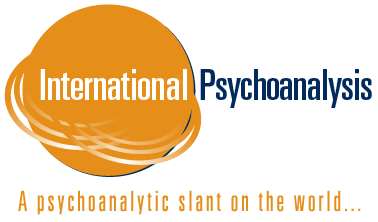
Organizing Your Space for Applied Behavior Analysis By Samuel Bowman
Applied behavior analysis (ABA) uses the principles of learning and positive reinforcement to improve the skills and behaviors of children on the autism spectrum. As a therapist, you must be prepared to meet each child exactly where they are on the path to learning new behaviors each time you see them. Whether your space rotates from room to room in a building, is the same all the time, or you visit the child in their home, being organized is pivotal to your success and the child’s ability to engage.
Before we dive into a few tips for getting your room (or rolling briefcase) in order, here are a few basics you need to know about ABA and autism.
ABA and Autism
Individuals with autism may require a significant amount of support in
their daily lives to control unwanted behaviors. Many children struggle with self-injury, repetitive motions, noise sensitivity, and social and communication problems. While there are many approaches to effective treatment for autism, ABA is a therapeutic approach aimed at changing behaviors.
Applied behavior analysis is an evidence-based therapy that has been proven useful in the treatment of those with autism. Many techniques are included in ABA. It is an adaptable therapy that can be delivered in many different locations and can help improve attention, decrease problem behaviors, and improve social skills.
Importance of Being Organized
One type of learning environment won’t meet the needs of every child with autism. Some children can thrive in a mainstream classroom, and others need to be in a group of children with similar requirements. The same is true for ABA therapy. You might find that some children can focus and accomplish the goals of a session while working in the corner of a larger room with a little hustle and bustle going on. Other children are going to need a place with low stimulation.
No matter where your space might be, the more organized you are, the better experience the child will have. Younger children often need lower levels of stimulation. As they get older, many children with autism become more engaged and display fewer behavioral disturbances. If you see children across the spectrum of ages and severity of illness, you need to organize your space in a way that offers flexibility to individualize it before each session. Because these children need clear expectations, you don’t want to be rummaging through a large pile of manipulatives to find the precise one you want to use as a reward. Children with autism may not be able to “roll with the punches,” so you need to be tidy, organized, and intentional during every session.
Tips for a Therapeutic Space
Any good therapist knows that having the right equipment can make or break a therapy session. The good news for ABA is that you probably don’t need fancy or expensive tools. The downside is that you’re going to need a broad array of items. Here are a few tips you can use to set up your room, even if it’s mobile.
Designate a Space
Children need to know when it’s time for play and time for work. By setting up a designated space, even if it’s a corner of a classroom or the child’s bedroom, you’re establishing clear expectations when you enter the area with the child: It’s time to work.
Remember That Less Is More
You want to minimize distractions and stimulation. Make sure to remove or turn off the television, computer, or music. It might be a good idea to leave the walls plain instead of hanging posters or colorful images to reduce overstimulation.
Open floor space is imperative. Limit furniture and clutter. Choose a child-sized table and chairs for children who want to sit. Keeping an open space makes the room versatile in case a sibling or parent wants or needs to join a session.
Keep a Well-Filled Therapy Box
Because ABA uses reinforcers to reward behaviors you want to see in children, you’re going to need a big box of goodies. You will be on a non-stop search for new distractors. A few items to look for include flashcards, puzzles, tactile toys, and stacking toys. You’ll also want to have an assortment of sensory toys, like motorized toys, a weighted blanket, or chew toys.
Get Organized
Because children with autism can get distracted, you don’t want to be pulling out five items to find the one that you want to work with. You need to be organized and place the things you plan to use during an ABA session close to you as you get started. If you’re working in a child’s home, you might need to ask their parents to declutter a bedroom or other space so that you have a clean area that the child knows is used for therapy.
Pack It Up for the Road
If you move from room to room, throughout a school district, or from home to home, you need to be portable and organized. Purchase a bag on wheels that can hold your therapeutic items. You might have one pocket that you allow children to access to remove their things. Keep zippered pouches handy so that you can place items that need cleaned or stored for a specific child away from your general supplies.
As a therapist, your number one goal is to provide the right care to each child. Use these tips to get your space organized for the best results.
